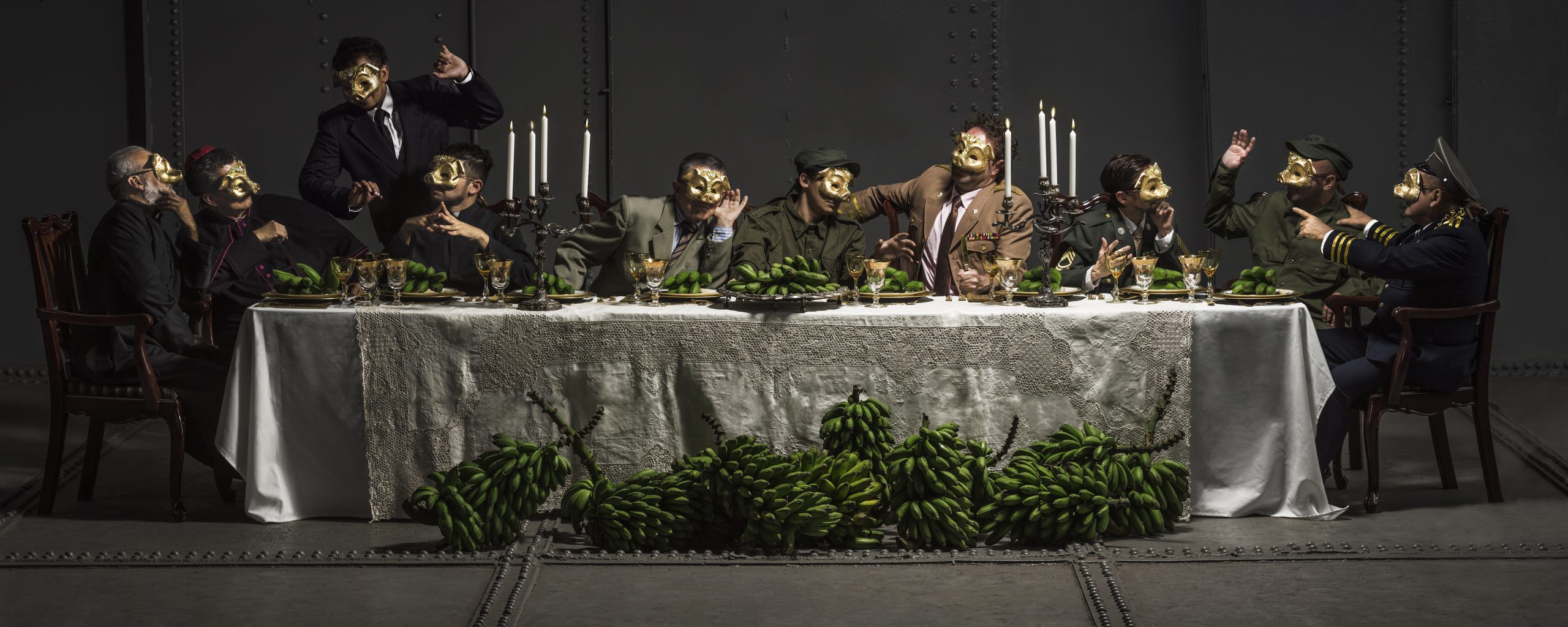ARTIST |
Roberto Guerrero |
TITLE |
La Negociacion (Estos chanchos también comen guineo) |
YEAR |
2015 |
ARTIST’S COUNTRY OF ORIGEN |
Costa Rica |
DIMENSIONS |
240 x 610 cm |
MEDIUM |
Digital photography on MDF panels (5 panels) |
Credits: Image courtesy of Museo de Arte y Diseño Contemporáneo (MADC), San José, Costa Rica.
In La negociación (Estos chanchos también comen guineo), artist Roberto Guerrero presents a large-format photograph made up of 5 panels in which a group of men dressed as technocrats, soldiers and politicians share a dinner of plantains. In the image, the excess is evident and exacerbated by including bunches of bananas both on the table and on the ground. The men wear golden pig masks over their faces, hiding their facial features. The staging is an appropriation of the famous painting, The Last Supper by Renaissance painter Leonardo da Vinci, whose iconography is easily recognisable in the West.
The photograph operates on several interpretive planes. In the first instance, the artist makes a comment about the power of the elites linked to the United Fruit Company’s actions in Costa Rica since the end of the 19th century. The effects of the social and natural devastation resulting from the banana exploitation were experienced first hand by the workers and inhabitants of the plantations, while the circles of power that watched from a distance enjoyed the economic returns of their imperialist decisions.
However, the piece is much more biting, as, whilst making a political critique, it is also a reflection on the power exercised against repressed sexualities. This is evident in the title, which broaches the offensive colloquial comment that some Costa Rican men throw at women when they see them go by: “¿estos chanchos comen guineo?” (in English, ‘Do those pigs eat bananas?’). This question is part of the language of sexual harassment used colloquially in the street in which the word “chancho” (‘pig’) refers to the buttocks and “guineo” (a word that in local slang means banana) refers to the penis. By posing the suggestive question as a statement in the title of the piece, Guerrero suggests that the circles of power represented in the photo, the ones responsible for creating the room for sexual repression, enjoy and participate in the very acts that they repress.



